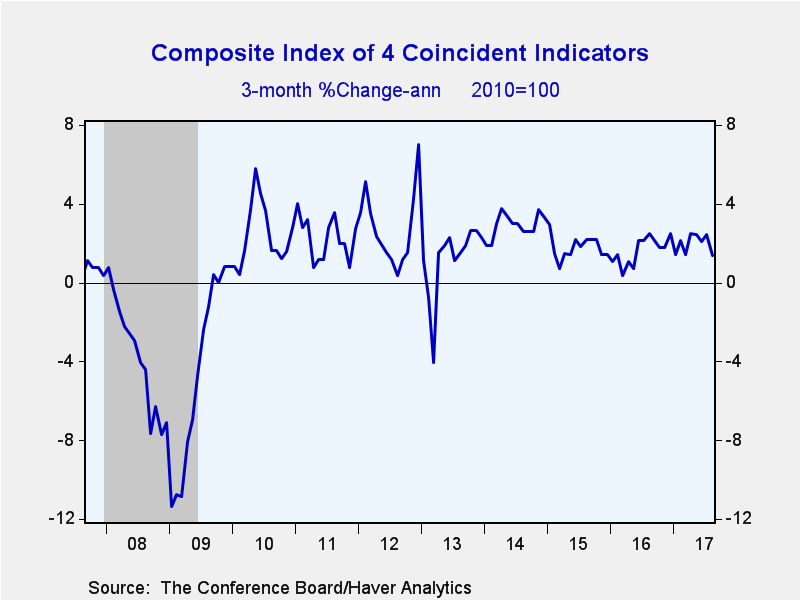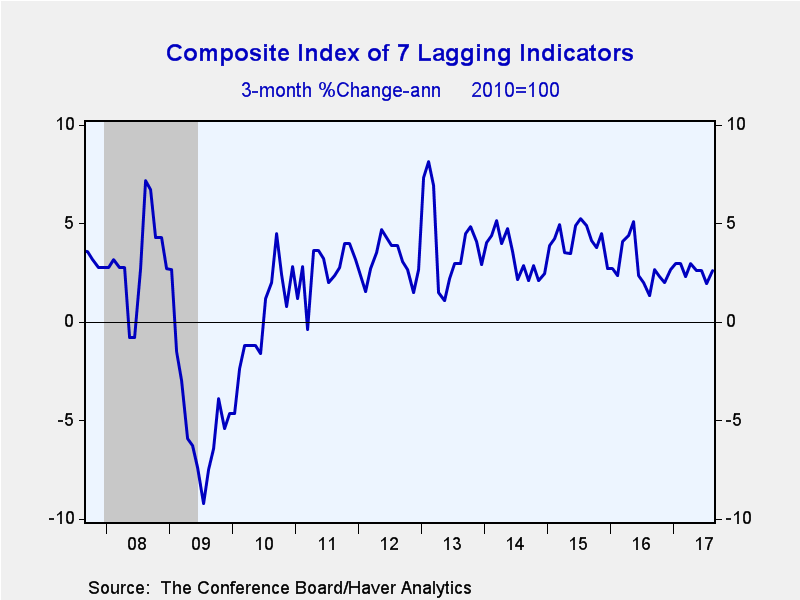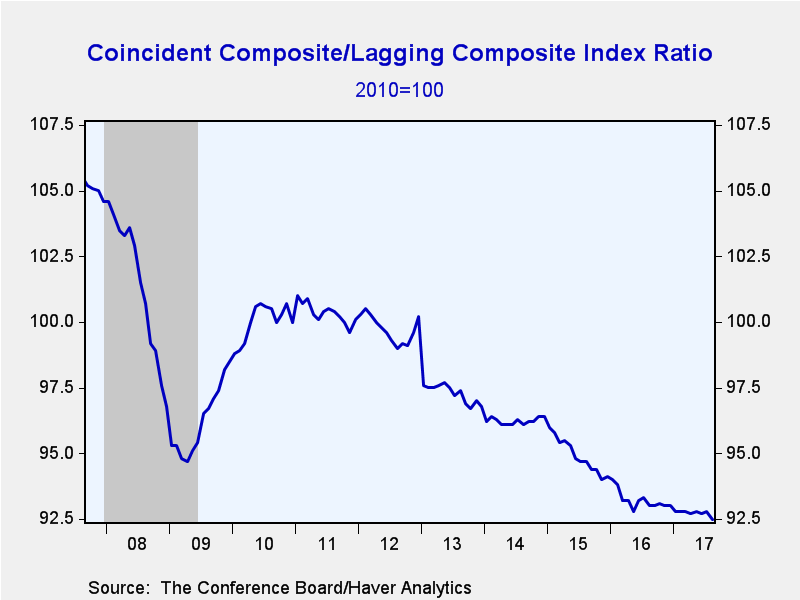 Global| Sep 21 2017
Global| Sep 21 2017U.S. Leading Economic Indicators Strengthen
by:Tom Moeller
|in:Economy in Brief
Summary
The Conference Board's Composite Index of Leading Economic Indicators increased 0.4% (4.4% y/y) in August following an unrevised 0.3% July gain. A 0.2% rise had been expected in the Action Economics Forecast Survey. Three-month growth [...]
The Conference Board's Composite Index of Leading Economic Indicators increased 0.4% (4.4% y/y) in August following an unrevised 0.3% July gain. A 0.2% rise had been expected in the Action Economics Forecast Survey. Three-month growth remained firm at 5.5% (AR).
Performance amongst the components of the leading indicator series was mostly positive. Building permits, a steeper interest rate yield curve, consumer expectations for business/economic condition, the ISM new orders and the average workweek series each contributed positively to the overall index rise. Stock prices and factory orders for both consumer and capital goods had neutral effects. Initial claims for unemployment insurance had a negative effect on the index.
The Index of Coincident Economic Indicators held steady m/m, up 1.9% y/y, following a 0.3% rise. Gains in payroll employment, personal income less transfer payments and business sales were countered by a decline in industrial production. Three-month growth in the index slowed to 1.4% (AR), its weakest since March.
The Index of Lagging Economic Indicators rose 0.3% (2.5% y/y) following three months of 0.2% gain. Commercial & industrial loans outstanding, the consumer credit-to-personal income ratio, the ratio of business inventories-to-sales and the average duration of unemployment each contributed positively to the index change. Growth in labor costs contributed negatively, but banks' prime lending rate and the change in the services CPI had neutral effects. Three-month growth of 2.6% in the index was fairly steady.
The ratio of coincident to lagging indicators is often considered to be a leading indicator of economic activity. If economic growth is slowing, both sets of indicators will be rising, but the gains in the coincident index will be slower than the lagging; thus, the ratio will fall. This ratio declined during August to a record low.
The Conference Board figures are available in Haver's BCI database; the components are available there, and most are also in USECON. The expectations are in the AS1REPNA database. Visit the Conference Board's site for coverage of leading indicator series from around the world.
| Business Cycle Indicators (%) | Aug | Jul | Jun | Aug Y/Y | 2016 | 2015 | 2014 |
|---|---|---|---|---|---|---|---|
| Leading | 0.4 | 0.3 | 0.6 | 4.4 | 1.2 | 4.4 | 5.6 |
| Coincident | 0.0 | 0.3 | 0.1 | 1.9 | 1.6 | 2.3 | 2.5 |
| Lagging | 0.3 | 0.2 | 0.2 | 2.5 | 3.4 | 3.7 | 3.6 |
Tom Moeller
AuthorMore in Author Profile »Prior to joining Haver Analytics in 2000, Mr. Moeller worked as the Economist at Chancellor Capital Management from 1985 to 1999. There, he developed comprehensive economic forecasts and interpreted economic data for equity and fixed income portfolio managers. Also at Chancellor, Mr. Moeller worked as an equity analyst and was responsible for researching and rating companies in the economically sensitive automobile and housing industries for investment in Chancellor’s equity portfolio. Prior to joining Chancellor, Mr. Moeller was an Economist at Citibank from 1979 to 1984. He also analyzed pricing behavior in the metals industry for the Council on Wage and Price Stability in Washington, D.C. In 1999, Mr. Moeller received the award for most accurate forecast from the Forecasters' Club of New York. From 1990 to 1992 he was President of the New York Association for Business Economists. Mr. Moeller earned an M.B.A. in Finance from Fordham University, where he graduated in 1987. He holds a Bachelor of Arts in Economics from George Washington University.










